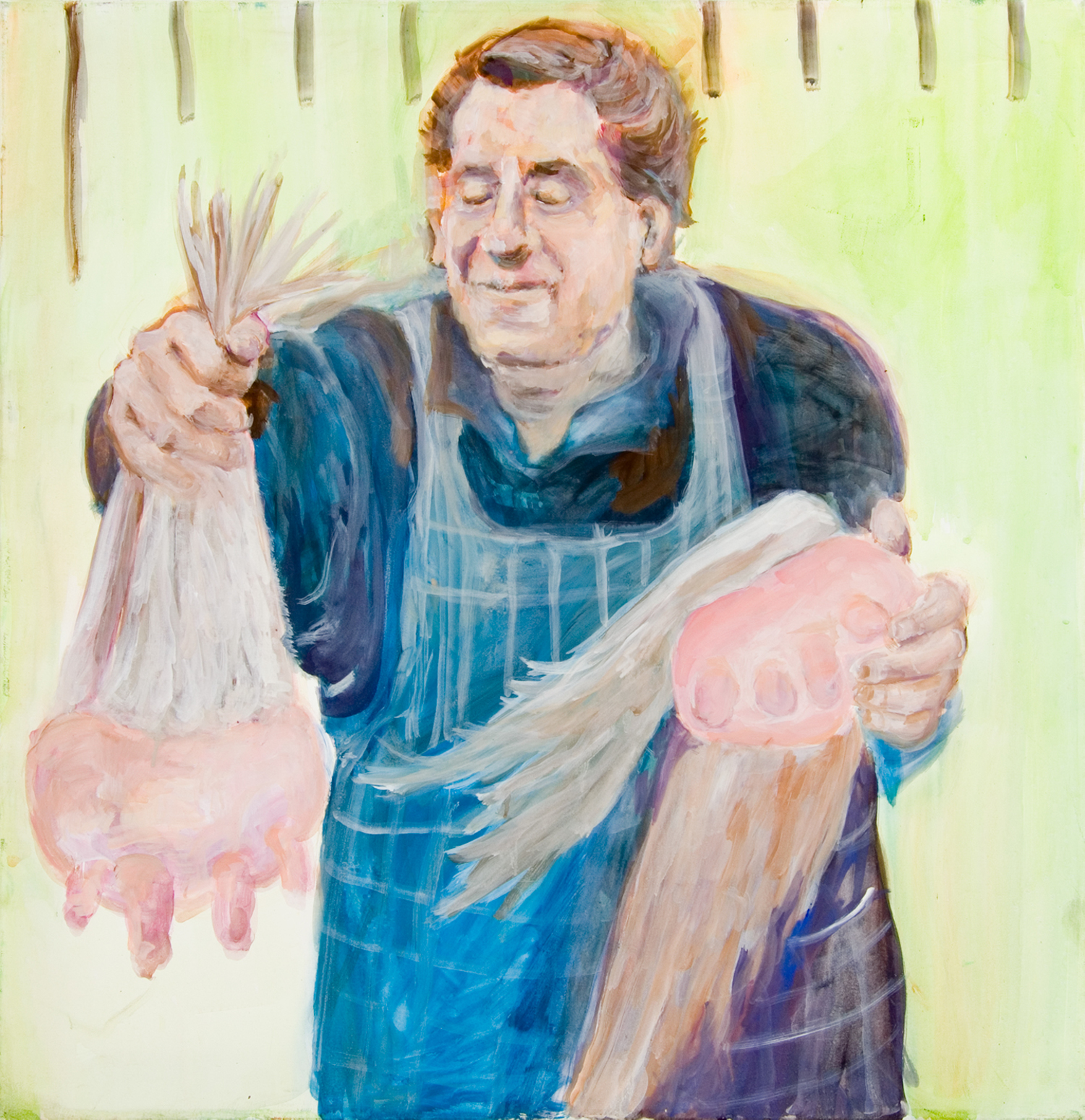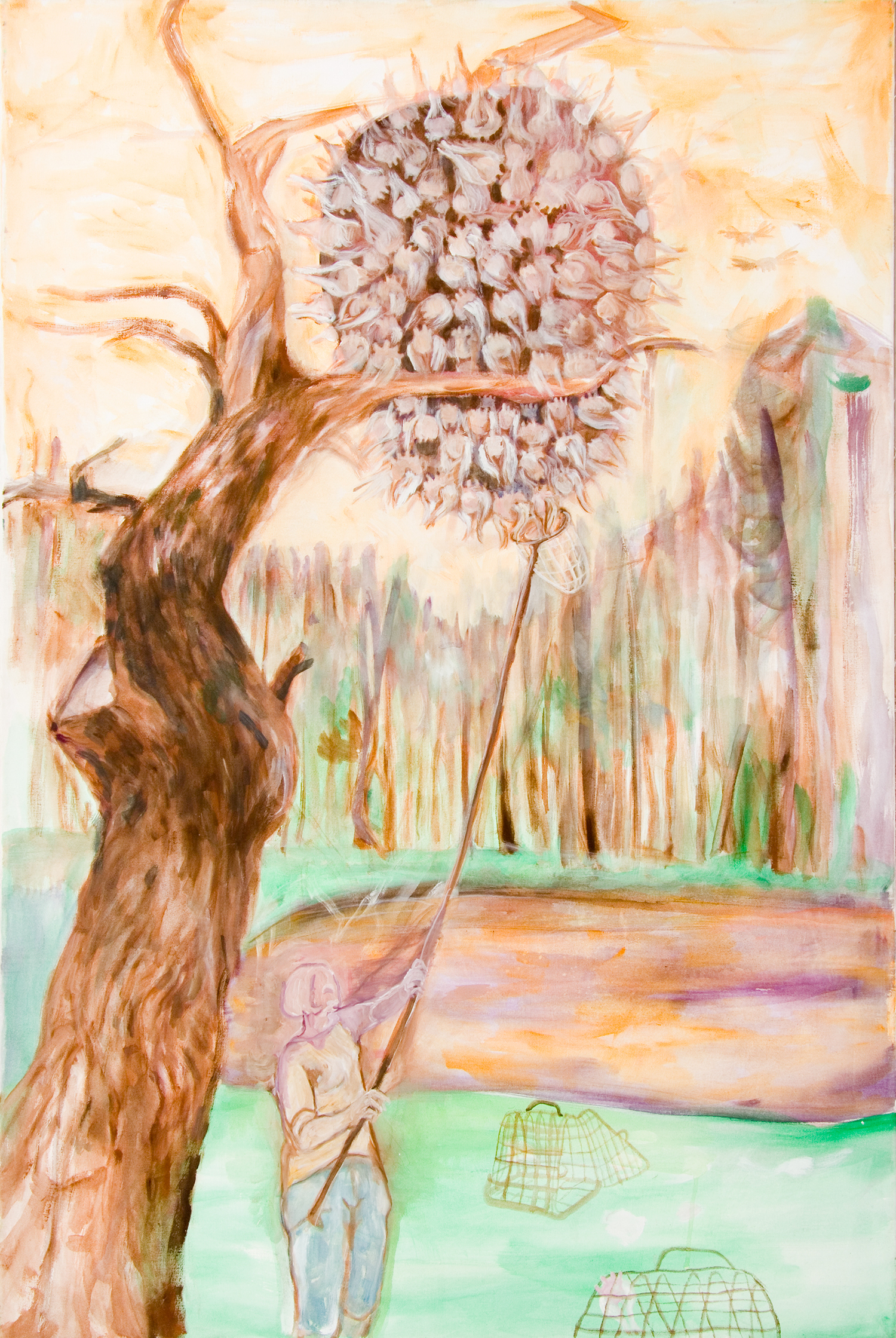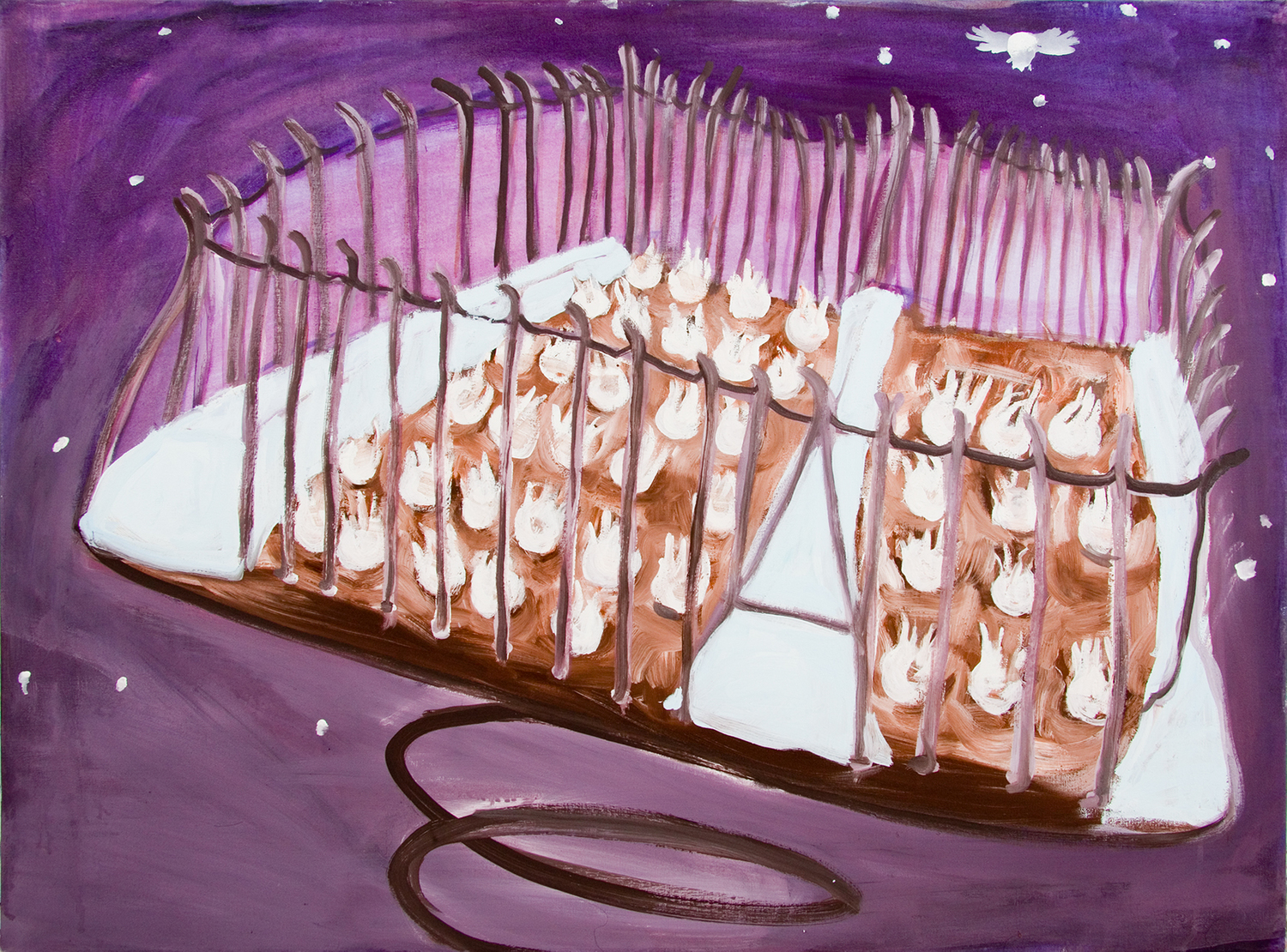LARGE-SCALE LIVESTOCK FARMING: Memories of a Factory Farm
This series NON-HUMANS, HUMANS, CLIMATE, MACHINES views large-scale livestock farming as an area primarily related to ethics and animal rights, but at the same time draws attention to the fact that large-scale farming is a capitalist mechanism, and is the result of economic and power-related interests and pressures that allow and normalise slaughter on a large-scale. The texts try to identify a network of actors, agents and relationships that are involved in large-scale farming and present them as a complex problem.
The series is published in parallel with the ongoing campaign All Farm Animals Deserve to Roam Free. We call to end this inhumane practice by banning all cages for farmed animals. Cages are cruel.
Author of the fifth text for the series is artist Lenka Vítková. Lenka Vítková is a visual artist, occasional editor, and curator. Her work oscillates between both abstract and figurative painting and fragmentary writing, with forays into other media.
Memories of a Factory Farm
Lenka Vítková
The topic of factory farms sat in my head like a narrow, abandoned cage until memories, associations, passages from books that I had come across slowly began to pile up. I thank Jiří Zemánek for sharing the following quote on his Facebook wall: “The reason our current system of material production kills the world is that it starts by seeing the world as dead. What then is there to love?” (Eisenstein, 2018)
When I was born, they showed me to my mother, and then after that I lay somewhere among the other babies and only got to see my mother three days later. After three days, they brought me to her for ten or twenty minutes of breastfeeding, then I was taken away for exactly three hours. This is how it went, around and around, until they let us out of the maternity ward. I’ve always been frightened by the photo of Václav Havel with a cart full of newborns. Now I know many ways through which one can relive one’s own birth. I chose one of them, and went back to that state of total abandonment, hopelessness, and wrongness that I experienced after my birth. “I feel like I’m on the sidelines of my own life,” I said aloud. “So let’s bring you back out onto the field, okay?” the woman said.
At the time of writing, the phrase “birth center” has once again made an appearance in the media. At the moment, it’s most often represented by a photo of a group of men arranged around an empty hospital bed. In the middle is Prime Minister Andrej Babiš, who is still enjoying the profits from business activities including assisted reproduction centers, firms processing meat from factory poultry farms, big agricultural businesses growing industrial crops in giant fields and transporting fertilizer for the large-scale cultivation of both industrial and food crops, which contain poisons including materials causing infertility. For the photo, he put on his statesman’s expression, in which gravity toys unpleasantly with the loose skin on his head, and the background behind him is a large-screen television, the primary media of the factory farm era.
My mother breastfed me for about four months, which, for the time – this was, precisely, the mathematical middle of the 1970s – was quite long. Afterwards, the general recommendation was for Sunar, whose name came from its status as national (národní) dried (sušené) milk. The system that took breastfeeding away from mothers, in its own way, took away their bodies, which were noticeably worse at returning to their original forms without breastfeeding (most of my breastfeeding friends are much thinner after having a child than before); above all, though, it limited their intimate contact with their babies (mothers today who, for some reason, do not breastfeed are encouraged to establish close contact with their babies in other ways). In one photo from my early childhood, my mother’s face is covered by a surgical mask. “Creating a child” meant facing a series of alienating traumas. (…)
Download full text HERE:
Addendum: Memories of Věra Kotlárová-Chovancová’s paintings
People have found it more profitable (than, say, growing potatoes in a field) to make models of children with their arms raised to the sky and their mouths open to summon udders. The vomit flies over the dummy baby. It has a sensor on the back that reacts to movement and touch. When the udder comes down to suckle and touches the teat hole (“the baby’s mouth”), the sensor activates the knife and stabs. The woman stands on her catch, the trophy. The man contentedly rubs his udder. I wonder how much he’ll come clean.
I think that one of the sources of the text above was my memories of some of Věra Kotlarová’s paintings from Galerie Magda, the first internet gallery on the Czech internet led by Pavel Pražák, which presented them with notes by the artist in the cycle Udders of God [Vemínka Boží], as well as from her profile in a section of New Faces [Nové tváře] written years ago for the magazine by artist Jiří Ptáček. I remember how they shocked me. By coincidence, I came to know their artist right when I was writing the text for the Factory Farm series. The painter, a graduate of Václav Stratil’s studio at Brno University of Technology’s Faculty of Fine Arts, currently lives with her husband in the South Bohemian village of Krasetín. In addition to working as a teacher at the St. Agnes of Bohemia Secondary School of Art and Design in Český Krumlov, she cares for many animals on her homestead and also swims:
“I guess I’ve created a world around me, and I’m most interested in observing the lives of animals: their essence is limpid as a spring, they have their own language that I encode, I get along very well with them, they’re not in a rush, they’re satisfied, and when they look into your eyes, you feel the great mystery of life and beauty before you, silence, or their sounds and movements complete their sense of splendor…
“I taught myself to kill them, too – that is, to take life from them and eat them – and this was a great turning point, as though I’d somehow accepted my death as a part of me just like my birth… I think I get more joy from life than at any other time when a goat kid looks into your eyes, it’s an indescribable beauty. How often a chicken, say, or a pheasant was killed by a bump to the head – cerebral edema… I was with it in its final moments, I tried to help it, but it was no use… when it was and then wasn’t, that tremble of death, the moment and the final exhalation when its little body could no longer bear the weight and expired, the extinguishing of the flame, the moment when the second hand stops and never sets into motion again…that was powerful, that moment.
It’s as though my eyes have been opened, but there’s still glass there stopping me from seeing something, but perhaps I’ll see it someday.
I swim, I was afraid, I was drowning and terrified of water, something broke in me and I started to trust it, and trusting it, I swim. An hour later, I start swimming and your head just totally clears up, I feel my breath, my heartbeat, and I become a part of the water, my body gets tired and merges with it… I love water, it beckons to me when I walk by it, I was even swimming in February, breaking the ice with my legs… People don’t understand it, but they don’t have to. Really, I don’t understand either, but I have to :). WHEN I’M UNDERWATER, I FEEL LIKE A FISH.”
(From email conversation with Věra Kotlárová-Chovancová. 17th June 2019.)
Paintings (c) Věra Kotlárová-Chovancová








